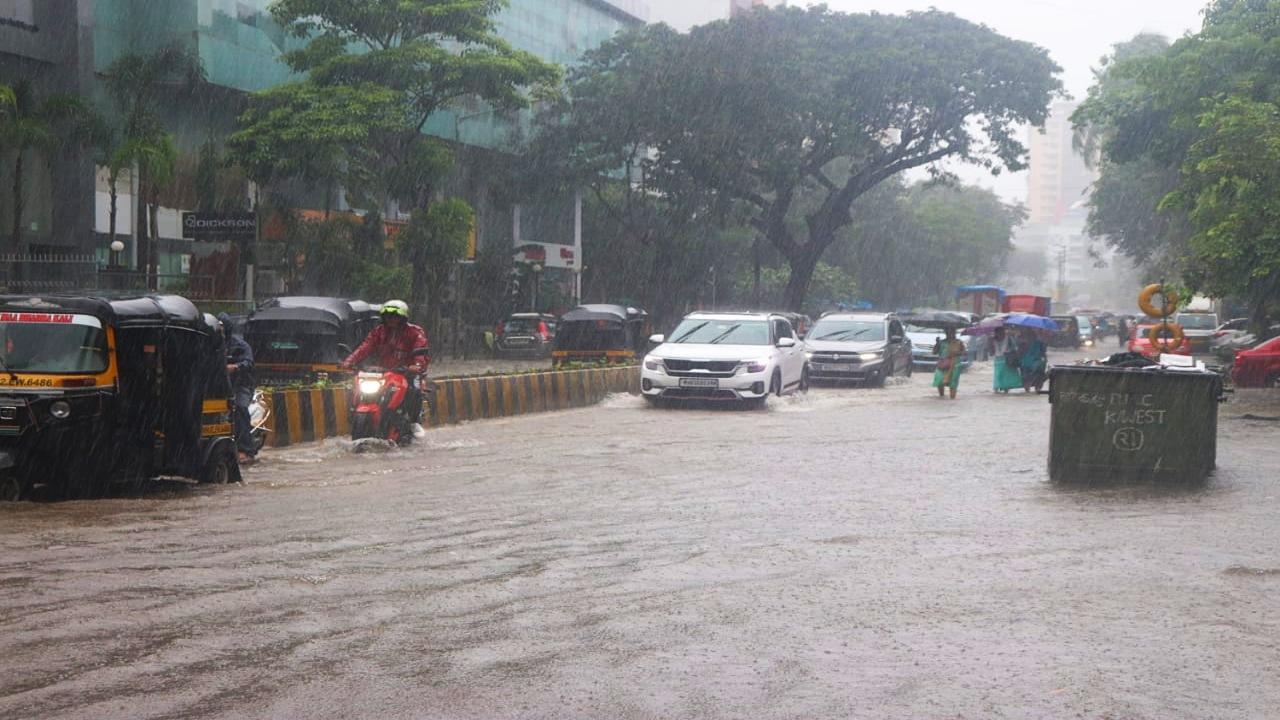Maharashtra's Raigad district recorded an average 104 mm rainfall in the 24-hour period ending at 10 am on Wednesday

File photo/Anurag Ahire/Midday
Maharashtra's Raigad district recorded an average 104 mm rainfall in the 24-hour period ending at 10 am on Wednesday, officials said. The district has so far received 64 per cent of the average rainfall in this monsoon season, they said.
ADVERTISEMENT
The Kundalika river in Raigad was flowing above the danger mark on Wednesday, the officials said.
The weather department on Tuesday night issued a 'red' alert for Wednesday, predicting heavy to very heavy rainfall at a few places in Raigad district.
Also Read: Mumbai slumpreneur earns lakhs to support family with beauty business
Collector Dr Yogesh Mhase declared a holiday for schools and colleges in the district on Wednesday.
In the 24-hour period ending at 10 am on Wednesday, the district received an average rainfall of 104 mm. While Mahad taluka received the highest 145 mm rainfall during the period, Alibaug taluka received the lowest 45 mm, the district collector's office said in a release.
Panvel, Karjat, Mangaon, Poladpur and Mhasala talukas recorded more than 120 mm rainfall, while Alibaug, Khalapur, Uran, Sudhagad, Pen, Roha, Murud and Tala talukas received less than 100 mm downpour, it said.
From June to September, the district every year receives an average rainfall of 3,150 mm.
This year, the rainy season in Raigad started after June 23 and the district has so far received 2,020 mm downpour, or 64 per cent of the average monsoon rainfall, the release said.
Also read: Mumbai weather update: Heavy to very heavy rains till July 27; IMD issues orange alert
The Kundalika river in the district crossed the danger mark of 23 metres and was flowing at 23.10 metres at 12 noon on Wednesday, as per an official from the irrigation department.
The Savitri, Amba, Patalganga, Ulhas and Gadhi rivers in the district were flowing below the danger level, the official said.
Meanwhile, in the wake of heavy rains over the last few days, the Tansa and Vihar lakes, the key sources of potable water for Mumbai, started overflowing on Wednesday, the Brihanmumbai Municipal Corporation (BMC) said.
Out of the seven reservoirs that supply water to Mumbai, the Vihar, Tansa and Tulsi lakes have overflown so far.
The Vihar lake, located in Mumbai's Sanjay Gandhi National Park, overflowed at 12.48 am, while the Tansa lake, located in neighbouring Thane district, overflowed at 4.35 am on Wednesday, the BMC said.
"Tansa lake, among the 7 lakes that supply water to Mumbaikars, has started overflowing today (July 26, 2023) at 4:35 AM," the civic body tweeted.
The Tulsi lake overflowed on July 20 following heavy rains in the city and suburbs.
Mumbai receives 3,800 MLD (millions of litres per day) water from the seven reservoirs - Bhatsa, Upper Vaitarna, Middle Vaitarna, Tansa, Modak Sagar, Vihar and Tulsi, located in Mumbai, Thane and Nashik districts.
Notably, the BMC imposed a 10 per cent water cut here from July 1, after the level of lakes supplying water to Mumbai went down due to inadequate rainfall at that time in their catchment areas.
The Powai lake in Mumbai also started overflowing earlier this month, but its water is not used for drinking purpose, BMC officials said.
Consequent upon the Tansa lake overflowing, a discharge of 1,100 cusecs (cubic foot per second) of water has been started from the reservoir, said a release by Thane district authorities.
It said the water storage in Vihar and Tulsi lakes was 100 per cent, while it was 99.91 per cent in Tansa, 87.69 per cent in Modak Sagar and 67.95 per cent in the Middle Vaitarna reservoir.
In the Barvi dam in Thane district, the water storage was 80.76 per cent, while in the Bhatsa dam it was 61.72 per cent, the release said.
In Palghar district, the water storage in Dhamni dam was 92.35 per cent, and 100 per cent in Kavdas and Wandri reservoirs.
Besides, the water storage in the Upper Vaitarna reservoir in Nashik was 52.14 per cent, the release said. (Agencies)
 Subscribe today by clicking the link and stay updated with the latest news!" Click here!
Subscribe today by clicking the link and stay updated with the latest news!" Click here!







